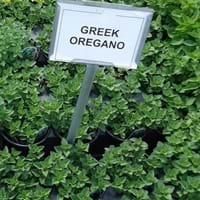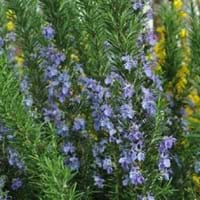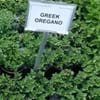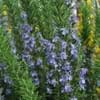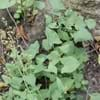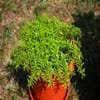Life Span
Perennial
Perennial
Origin
Mediterranean
Southern Europe, Mediterranean
Types
Oregano maru, Lippia graveolens, Oregano tyttanthum
Arp Rosemary, Gorizia Rosemary, Lockwood de Forest Rosemary, Salem Rosemary
Habitat
Open grasslands, Open scrub, Rocky areas
Dry areas, Open scrub
USDA Hardiness Zone
4-9
8-11
Sunset Zone
1a, 1b, 2a, 2b, 3a, 3b, 4, 5, 6, 7, 8, 9, 10, 11, 12, 13, 14, 15, 16, 17, 18, 19, 20, 21, 22, 23, 24
H1, H2, 4, 5, 6, 7, 8, 9, 10, 11, 12, 13, 14, 15, 16, 17, 18, 19, 20, 21, 22, 23, 24
Habit
Clump-Forming
Oval or Rounded
Flower Color
White
Blue Violet
Flower Color Modifier
Bicolor
Bicolor
Fruit Color
Tan
Not Available
Leaf Color in Spring
Green
Sea Green
Leaf Color in Summer
Green
Sea Green
Leaf Color in Fall
Green
Sea Green
Leaf Color in Winter
Light Green
Light Green
Leaf Shape
Ovate
Needle like
Plant Season
Spring, Summer, Fall
Spring, Summer, Fall, Winter
Sunlight
Full Sun, Partial Sun
Full Sun
Type of Soil
Loam, Sand
Loam, Sand
The pH of Soil
Neutral, Alkaline
Neutral, Alkaline
Soil Drainage
Well drained
Well drained
Bloom Time
Early Summer, Summer, Late Summer, Early Fall, Fall
Early Spring, Spring, Late Spring, Late Winter
Tolerances
Drought
Drought
Where to Plant?
Container, Ground, Pot
Container, Ground, Pot
How to Plant?
Stem Cutting
Seedlings, Stem Planting
Plant Maintenance
Medium
Medium
Watering Requirements
Average Water Needs, Do Not over Water
Do not water frequently, Does not require lot of watering, It cannot sustain wet-feet, Never Over-water, Requires watering in the growing season, Water when soil is dry, when new, water every week
In Summer
Lots of watering
Lots of watering
In Spring
Moderate
Moderate
In Winter
Average Water
Average Water
Soil pH
Neutral, Alkaline
Neutral, Alkaline
Soil Type
Loam, Sand
Loam, Sand
Soil Drainage Capacity
Well drained
Well drained
Sun Exposure
Full Sun, Partial Sun
Full Sun
Pruning
Remove damaged leaves, Remove dead branches, Remove dead leaves
Prune for shortening long shoots, Prune if you want to improve plant shape, Prune regularly, Prune to control growth, Requires extensive pruning
Fertilizers
All-Purpose Liquid Fertilizer
All-Purpose Liquid Fertilizer
Pests and Diseases
Red blotch
Mealybugs, Powdery mildew, Root rot, Scale, Spider mites, Whiteflies
Plant Tolerance
Drought
Drought
Flower Petal Number
Single
Single
Fragrant Bark/Stem
Yes
Yes
Foliage Texture
Medium
Fine
Foliage Sheen
Matte
Matte
Attracts
Bees, Butterflies, pollinators
Bees
Allergy
Not Available
Skin rash, Vomiting
Aesthetic Uses
As decorated salad, Ground Cover
Beautification, Showy Purposes
Beauty Benefits
Not Available
Not Available
Environmental Uses
Air purification
Air purification
Medicinal Uses
Cold, Fever, Gastrointestinal disorders, Nerve pain, Respiratory Disorders
Antioxidants, Cough, Gastrointestinal disorders, Heartburn, High blood pressure, Indigestion
Part of Plant Used
Leaves
Flowers, Leaves
Other Uses
Used as a flavouring in food, Used as an ointment
Air freshner, Oil is used for aromatherapy, Oil is used in perfume, soaps, creams, etc., Showy Purposes, Used as a spice
Used As Indoor Plant
No
Sometimes
Used As Outdoor Plant
Yes
Yes
Garden Design
Container, Edible, Herb / Vegetable, Mixed Border
Container, Edible, Hedges, Herb / Vegetable, Mixed Border, Topiary / Bonsai / Espalier
Botanical Name
ORIGANUM heracleoticum
ROSMARINUS officinalis 'Tuscan Blue'
Common Name
Greek Oregano
Rosemary, Tuscan Blue Rosemary
In Hindi
रामतुलसी
टस्कन ब्लू दौनी
In German
Greek Oregano
Tuscan Blau Rosmarin
In French
marjolaine sauvage
Toscane Bleu Rosemary
In Spanish
Greek Oregano
Toscana azul Romero
In Greek
Greek Oregano
Τοσκάνης Μπλε Rosemary
In Portuguese
Orégano
Tuscan Azul Rosemary
In Polish
Lebiodka pospolita
Toskańskie Niebieski Rosemary
In Latin
Greek Oregano
Tusci Rosemary blue
Phylum
Tracheophyta
Magnoliophyta
Class
Magnoliopsida
Magnoliopsida
Family
Lamiaceae
Lamiaceae
Genus
Origanum
Rosmarinus
Clade
Angiosperms, Asterids, Eudicots
Not Available
Tribe
Not Available
Not Available
Subfamily
Not Available
Not Available
Number of Species
Not Available
Season and Care of Greek Oregano and Tuscan Blue Rosemary
Season and care of Greek Oregano and Tuscan Blue Rosemary is important to know. While considering everything about Greek Oregano and Tuscan Blue Rosemary Care, growing season is an essential factor. Greek Oregano season is Spring, Summer and Fall and Tuscan Blue Rosemary season is Spring, Summer and Fall. The type of soil for Greek Oregano is Loam, Sand and for Tuscan Blue Rosemary is Loam, Sand while the PH of soil for Greek Oregano is Neutral, Alkaline and for Tuscan Blue Rosemary is Neutral, Alkaline.
Greek Oregano and Tuscan Blue Rosemary Physical Information
Greek Oregano and Tuscan Blue Rosemary physical information is very important for comparison. Greek Oregano height is 30.50 cm and width 30.50 cm whereas Tuscan Blue Rosemary height is 150.00 cm and width 60.00 cm. The color specification of Greek Oregano and Tuscan Blue Rosemary are as follows:
Greek Oregano flower color: White
Greek Oregano leaf color: Green
Tuscan Blue Rosemary flower color: Blue Violet
- Tuscan Blue Rosemary leaf color: Sea Green
Care of Greek Oregano and Tuscan Blue Rosemary
Care of Greek Oregano and Tuscan Blue Rosemary include pruning, fertilizers, watering etc. Greek Oregano pruning is done Remove damaged leaves, Remove dead branches and Remove dead leaves and Tuscan Blue Rosemary pruning is done Prune for shortening long shoots, Prune if you want to improve plant shape, Prune regularly, Prune to control growth and Requires extensive pruning. In summer Greek Oregano needs Lots of watering and in winter, it needs Average Water. Whereas, in summer Tuscan Blue Rosemary needs Lots of watering and in winter, it needs Average Water.
